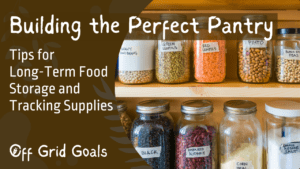In the quest for sustainable living and self-sufficiency, food forests emerge as hidden gems, offering a bounty of nourishment while fostering ecological harmony. But what exactly are food forests, and how can you begin planning and cultivating one? In this illuminating guide, we’ll delve into the concept of food forests, uncovering their secrets, and revealing what most people don’t know about these thriving ecosystems.
Understanding Food Forests:
At its core, a food forest mimics the structure and function of a natural forest ecosystem, but with a deliberate emphasis on edible plants. Inspired by permaculture principles, food forests are designed to maximize biodiversity, productivity, and resilience while minimizing inputs and maintenance. By harnessing the power of symbiotic relationships among plants, trees, fungi, and microorganisms, food forests create self-sustaining ecosystems that provide a diverse array of nutritious foods year-round.
Beginning Your Food Forest Journey:
Embarking on the journey to create a food forest requires careful planning, observation, and patience. Here are some essential steps to get started:
- Site Selection: Choose a suitable location for your food forest, considering factors such as sunlight exposure, soil quality, water availability, and microclimate variations.
- Design and Layout: Sketch out a rough design for your food forest, incorporating layers such as canopy trees, understory trees, shrubs, vines, ground covers, and root crops. Aim for a diverse and layered structure to maximize productivity and ecological benefits.
- Plant Selection: Research and select a variety of edible plants that are well-suited to your climate, soil, and site conditions. Choose species that complement each other in terms of growth habits, nutrient requirements, and ecosystem functions.
- Implementation: Begin planting your food forest by establishing canopy trees as the backbone of the ecosystem. Gradually add layers of understory trees, shrubs, and ground covers, interspersed with nitrogen-fixing plants, dynamic accumulators, and beneficial insect-attracting flowers.
- Maintenance and Care: Maintain your food forest through regular mulching, watering, pruning, and soil amendment practices. Foster a hands-off approach whenever possible, allowing natural ecological processes to flourish and evolve over time.
What Most People Don’t Know About Food Forests:
While food forests are gaining popularity in sustainable gardening circles, there are still some lesser-known aspects that deserve attention:
- Ecosystem Services: Food forests provide a wide range of ecosystem services beyond food production, including soil fertility improvement, water retention, carbon sequestration, wildlife habitat creation, and pollinator support.
- Resilience and Adaptability: Food forests exhibit remarkable resilience and adaptability to changing environmental conditions, making them well-suited to climate change mitigation and adaptation efforts.
- Community Building: Food forests have the potential to foster community engagement, education, and empowerment, serving as hubs for shared resources, knowledge exchange, and social interaction.
- Long-Term Investment: While food forests require time and effort to establish and maintain, they offer long-term rewards in terms of sustainable food production, ecological health, and resilience to external disruptions.
Food forests represent a holistic approach to sustainable living, offering a blueprint for regenerative agriculture and resilient communities. By embracing the principles of permaculture and stewarding the land with care and intention, anyone can cultivate a thriving food forest that nourishes both body and soul for generations to come.
Photo by Skylar Zilka on Unsplash



















